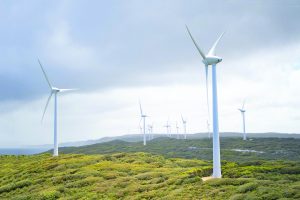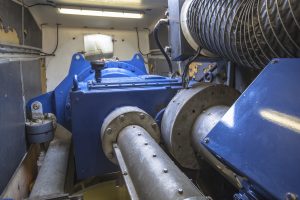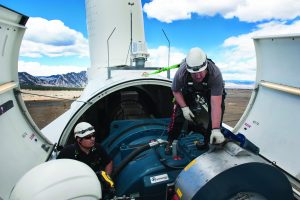While offshore wind turbine technology has evolved from its onshore predecessor, engineering experience in the offshore oil and gas industry has also contributed to the design and analysis methods utilized in offshore wind. In particular, the method utilized in the design of the support structure for an offshore wind turbine (OWT) has its roots in the development of offshore drilling platforms and research into their behavior by the American Petroleum Institute (API) in the 1970s.
Monopiles are by far the most popular foundation type for OWTs, and are likely to continue to be the predominant foundation type in shallow waters. While towers are typically classified and manufactured by the turbine rating, monopile foundations must be uniquely designed for each site due to their strong dependence on local loading and soil characteristics. Unique foundation design is time-consuming and expensive. Moreover, offshore wind turbines operate in a complex and highly variable environment; uncertainties in wind and wave loading and local soil characteristics can be substantial. Uncertainty in OWT design is currently treated by using conservative deterministic methods that can lead to larger (and therefore more expensive) towers and foundations and are not based on the probability that the OWT will exceed design limit states.
Uncertainty associated with the soil stems from the inherent heterogeneity of geomaterials and the difficulty of obtaining accurate in situ measurements of the soil properties. This in spite of the fact that site characterization often calls for at least one boring in the installation area, with more specific site tests per requirement of the applicable design standard.
In recent research, Carswell (a Ph.D. student at UMass Amherst) Arwade, DeGroot, and myself have investigated how soil property uncertainty affects the reliability of offshore wind turbine support structures with monopile foundations. Laterally loaded monopile foundations are typically designed using the p-y method, developed by API, for analysis of the interaction between the monopile and the surrounding soil. The p-y method is based on a distributed-spring model, in which the resistance provided by the soil (p) is defined by a non-linear relationship with the pile lateral displacement (y), and the soil continuum is approximated by a series of discrete springs. The p-y curve appropriate for a particular design and site location varies according to soil classification, soil properties, and soil location in reference to the water table.
The UMass researchers utilized probabilistic reliability analysis to determine the effect of soil properties on the structural response of a monopile in sandy soil. A non-linear quasi-static code was developed that determines the displacement of a monopile foundation under loading utilizing the p-y method. An incremental, load-controlled analysis with 20 distributed soil springs was used to compute the pile-head translations and rotations and an eigenvalue analysis was used to determine the first natural frequency of the monopile. Soil uncertainty was characterized by a probability distribution for a critical soil property, the friction angle (which characterizes the shear strength of the soil), based on measured estimates of variability. Ensembles of random soil property values were generated, and the quasi-static response and natural frequency of the monopile were computed. Two limiting cases were used to characterize the spatial correlation of soil properties at each of the 20 springs: perfect vertical spatial correlation and independent variation. These results allowed the researchers to characterize how soil property uncertainty can propagate to uncertainty in the response of an OWT support structure.
Several important conclusions were made from these analyses: 1) Assuming perfectly correlated soil properties yielded consistently lower reliability than assuming independent variation; 2) As the uncertainty of the soil properties increases, reliability decreases nonlinearly; 3) If the uncertainty in the soil properties are assumed constant, reliability increases linearly with soil density, and; 4) Soil property uncertainty causes the natural frequency to vary by approximately plus or minus 1 percent, which is a fairly small effect and unlikely to result in unwanted resonance.
The overall conclusion of this research demonstrated that uncertainty in soil properties can have important effects on the reliability of monopile foundations. Future designs of offshore monopiles will benefit from incorporating probabilistic design methods so as to properly account for soil property uncertainty and to avoid costly overdesign.

































